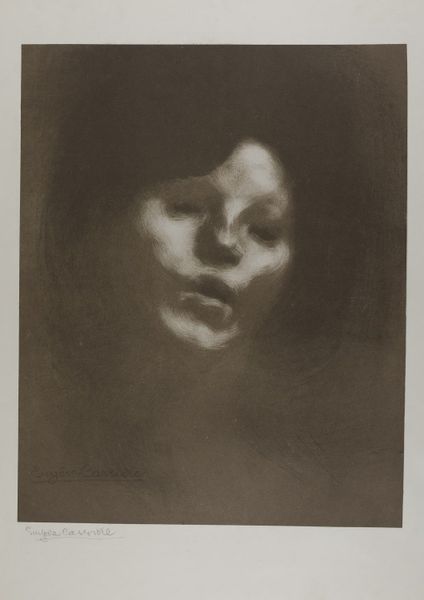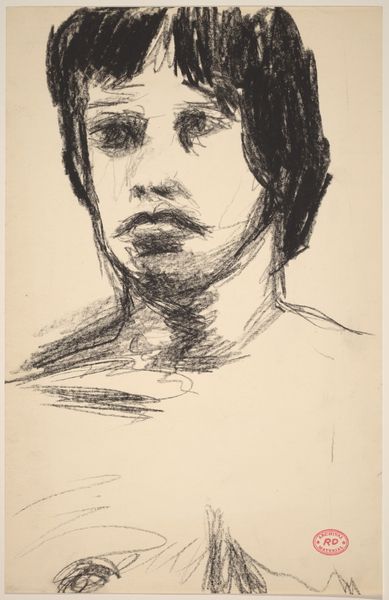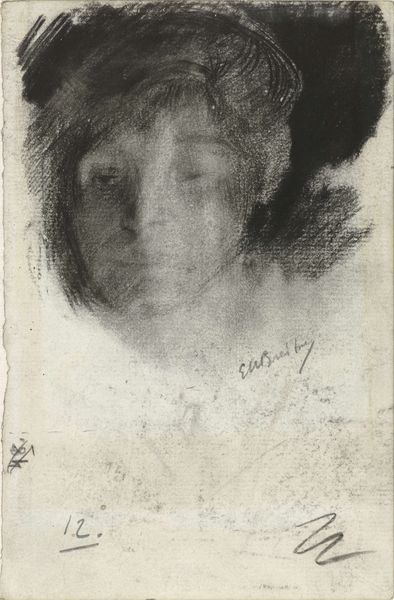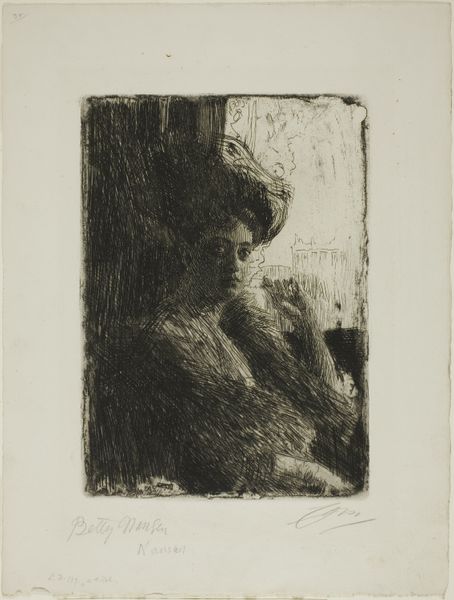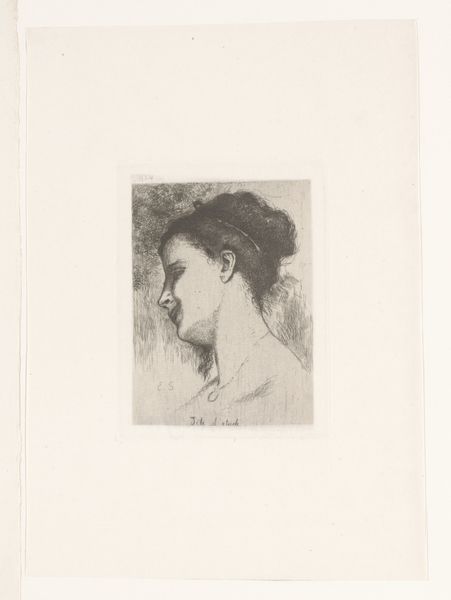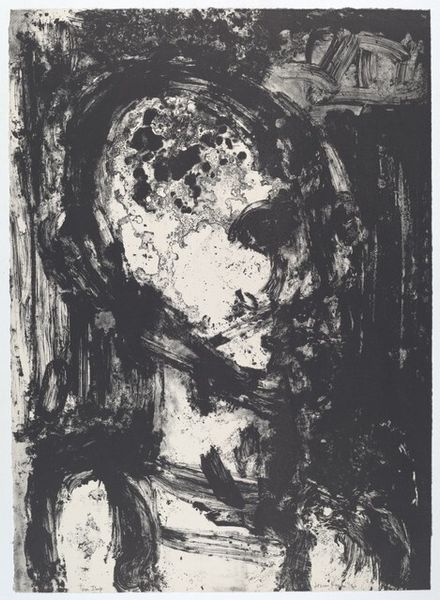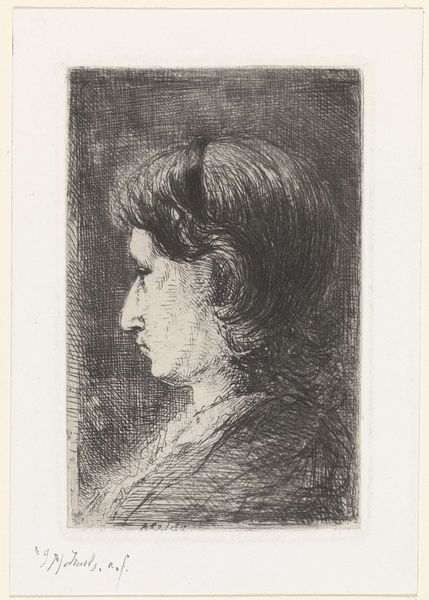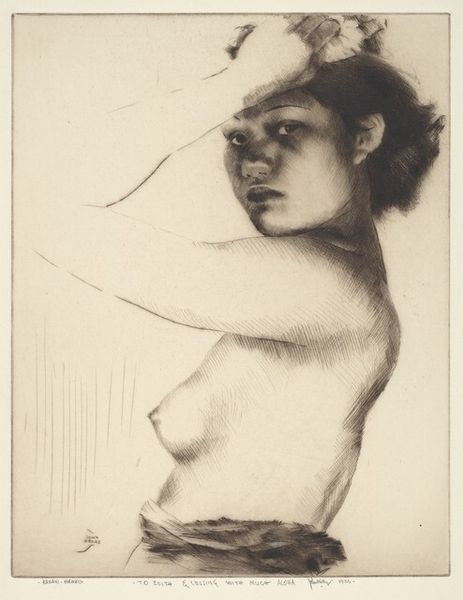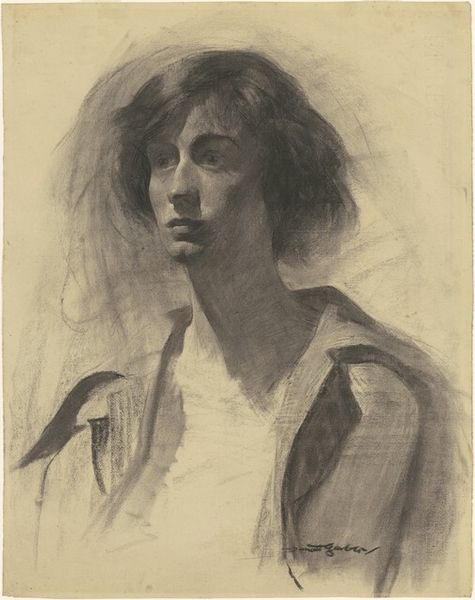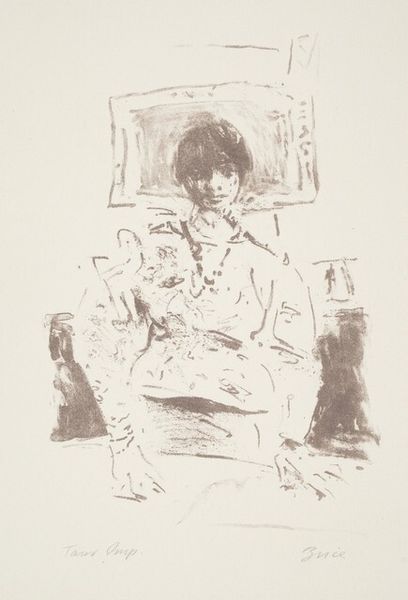
print, etching
#
portrait
# print
#
etching
#
monochrome
Copyright: National Gallery of Art: CC0 1.0
Curator: "Youth's Head", an etching by Harry L. Hurwitz. The print is presented in monochrome. Editor: It strikes me immediately as melancholic, with that stark contrast and the shadowed eyes. A quiet sort of sadness, perhaps. Curator: Indeed, the choice of etching allows for these subtle tonal shifts that do create such an evocative mood. I wonder, could the relative lack of light convey anything about the historical era when this work was conceived, and possibly about social positions held by the artwork's subject? Editor: Visually, the hair – or perhaps a hat – dominates the upper portion, creating a heavy crown above the face. Crowns can symbolize status, or conversely, a weight, burden. That shadow play could be exploring youth under societal expectations, perhaps? Or possibly the shadow implies concealment of one's personal history in some fashion. Curator: Considering that and given portraiture’s role throughout art history in solidifying social standing, this image may provide visual metaphor to ideas surrounding selfhood at the time this print was developed. It might be revealing to know whether the subject was part of a marginalized or otherwise contested identity group during the period in which this piece was composed. Editor: And how intriguing, that even without knowing much about its historical setting, these symbolisms within a single print are surprisingly layered. We might see multiple references co-existing and shifting simultaneously, conveying uncertainty as well as assertion. Curator: It demonstrates how art invites us to look both outward at historical and social structures and inward to our subjective reading of emotional realities. It's that combination that I find really quite compelling. Editor: Agreed, the piece speaks of interiority, of a contemplative space – inviting self-reflection across eras and viewpoints. A potent testament.
Comments
No comments
Be the first to comment and join the conversation on the ultimate creative platform.
